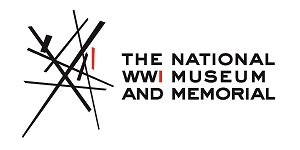 Special to the Philanthropy Journal
Special to the Philanthropy Journal
By Jennifer Zoebelein, Ph.D.
World War I was a devastating conflict that impacted both military forces and millions of civilians across the globe. Those communities caught in the war’s path suffered physical destruction unparalleled in human history. From Belgium to Russia to East Africa, civilians faced the loss of their homes and livelihood as well as scarcity of food, water and other essentials needed for survival. In the case of Belgians, French and Ottoman Armenians, they also faced deportation and execution. Faced with such catastrophe, Americans from all backgrounds played an important role in providing relief to Europe and the Middle East. They drew upon the experiences of previous decades, when traditional notions of charity gave way to the use of wealth to provide for the public good, and in the process helped establish the modern American philanthropic movement.
US Philanthropy During WWI
 As both a neutral country and active belligerent after 1917, the United States greatly contributed to and assisted with humanitarian efforts overseas. One of the country’s principal agencies for overseas civilian relief was the American Red Cross (ARC). Following U.S. entry into World War I, the ARC, having forged strong relationships with the federal government and leading philanthropic organizations, was charged with coordinating all American humanitarian assistance. For millions of Americans, supporting the Red Cross was viewed as a civic responsibility and this broad participation and popular support ensured the group’s wartime success.
As both a neutral country and active belligerent after 1917, the United States greatly contributed to and assisted with humanitarian efforts overseas. One of the country’s principal agencies for overseas civilian relief was the American Red Cross (ARC). Following U.S. entry into World War I, the ARC, having forged strong relationships with the federal government and leading philanthropic organizations, was charged with coordinating all American humanitarian assistance. For millions of Americans, supporting the Red Cross was viewed as a civic responsibility and this broad participation and popular support ensured the group’s wartime success.
No less important was the establishment of the Commission for Relief in Belgium (CRB) in October 1914. For the next five years, the CRB provided much-needed food supplies to millions of civilians living in German-occupied Belgium and France, becoming one of the leading international relief organizations of World War I. Much of the success of organizations like the American Red Cross and Commission for Relief in Belgium was spurred by funding provided by the Rockefeller Foundation (RF). It appropriated $22 million toward humanitarian aid, medical relief, community welfare and research while also providing aid to Armenian communities, relief for prisoners of war on both sides and funding for mental health services for American combat veterans.

American Red Cross poster illustrating Europe’s need for U.S. aid during World War I.
Image courtesy of National WWI Museum and Memorial
Everyday Americans made important contributions as part of the growing mass philanthropy movement. The intensity of their efforts established giving as a permanent part of twentieth-century life, intricately connected to what it meant to be an American. This “mass giving” during World War I also served to institutionalize philanthropy, helping to contribute to its long-term success. Wartime campaigns like the Liberty and Victory loan drives created a commitment to fundraising that persisted long after the war ended in 1918.
Though beneficial, wartime American philanthropy was also discriminatory. The existence of racial segregation meant that national organizations almost always excluded African Americans. Both discrimination and ethnic loyalties led other minorities to create their own organizations in response to the needs of their brethren overseas. Facing segregation and exclusion from many organizations, African American women turned to a network of their own institutions and leadership to provide relief activities for African American soldiers, financial support for the war effort and relief for black soldiers and their families. The American Jewish Joint Distribution Committee (JDC or “Joint”) provided large-scale funding for relief in Europe and Palestine, raising more than $16 million by 1918 due to the support of philanthropists like Jacob Schiff and the American Jewish Community.
One of the most notable female philanthropists was Anne Morgan, who, along with her friend Anne Murray Dike, led and supported the American Fund for French Wounded, which provided relief to Allied hospitals in France. After U.S. entry in 1917, Morgan and Dike organized the American Committee for Devastated France (CARD), which was dedicated to civilian relief and the revitalization of regions destroyed by war.
Postwar Philanthropy
Following the November 11, 1918 armistice, Americans continued their philanthropic efforts. Their assistance provided for the recovery of Europe and those struggling with famine and disease in Russia and China. Despite the Senate’s rejection of the Treaty of Versailles, Americans believed that just as they had influenced the Allied victory, so should they influence the postwar world.
France remained a focal point for American humanitarian efforts after 1918. Anne Morgan’s American Committee for Devastated France worked to revitalize everyday life in regions considered beyond saving. She and the volunteers that served with her offered medical, social and educational relief programs that brought France back from destruction. The American Red Cross also continued its work after 1918. The ARC focused its efforts on health and medical assistance, including “health operations” in Siberia, sending volunteers to China to help with a deadly cholera epidemic and work to improve the social welfare of European children.
One of the most severe humanitarian crises of the postwar period was the Russian Famine (1921–1923). CRB co-founder and chief administrator Herbert Hoover was selected to direct the American Relief Administration in Russia. It provided 90% of all humanitarian aid sent to the country, coordinating public and private relief and efficiently distributing provisions, all despite a lack of formal recognition of the new Soviet Union.
Successful fundraising and mobilizing by organizations proved invaluable for future philanthropic and social movements in the U.S., with groups like the NAACP and the Jewish Welfare Board using their wartime experiences as a springboard to reassert earlier initiatives of social justice or to transform their mission. American philanthropic efforts in the postwar period also helped redefine humanitarianism while acting as a critical moment in the development of an international collective attitude toward humanitarian rights. Future organization and implementation of humanitarian aid was thus inspired by the humanitarian experience during and after World War I.
Legacy
World War I was an important turning point in the history of American philanthropy. The efforts of Americans across the economic spectrum greatly expanded during and after the war and helped guide their response to World War II and beyond, leaving a distinctive mark on twentieth century humanitarian efforts. Since 1918, Americans have come to view philanthropy as not just a gift but an investment, a means of providing for their collective future. Philanthropy has thus not only benefited humanitarian, scientific or medical organizations, but the American people at large.
A native of Long Island, NY, Dr. Jennifer Zoebelein is the Special Projects Historian at the National WWI Museum and Memorial. She received her PhD from Kansas State University in May 2018 with her dissertation, “Memories in Stone and Ink: How the United States Used War Memorials and Soldier Poetry to Commemorate the Great War.” Prior to moving to the Midwest, Dr. Zoebelein was a Park Guide with the National Park Service at Fort Sumter National Monument following the completion of her Master’s degree in 2008, and a Visitor Services Associate with the New-York Historical Society after earning her Bachelor’s degree in 2004.





